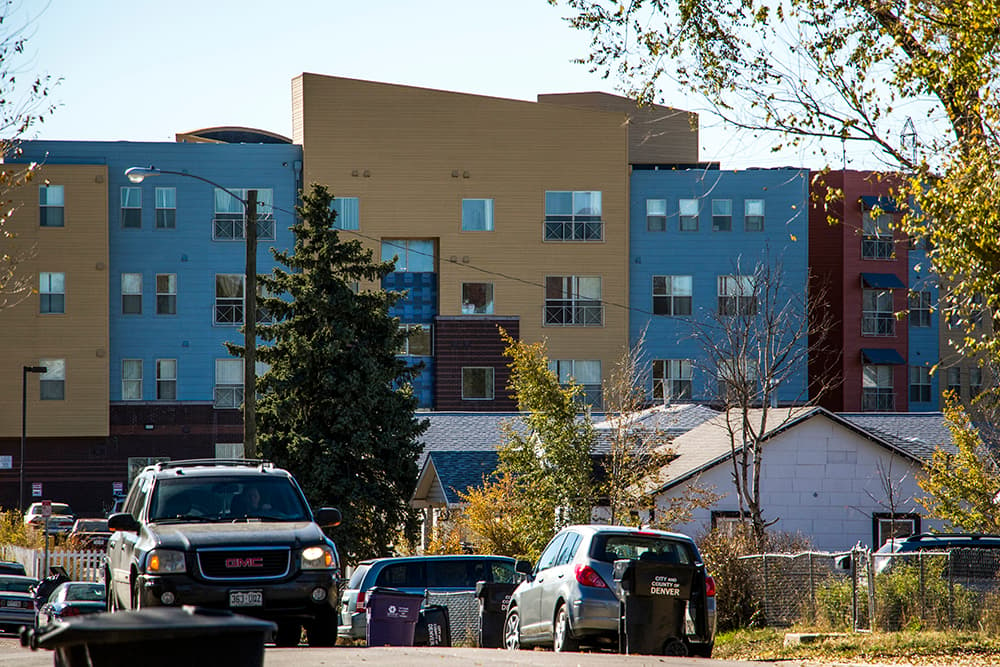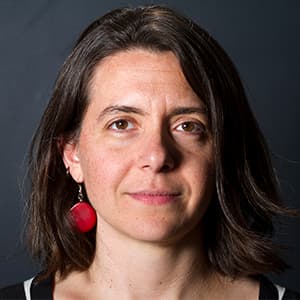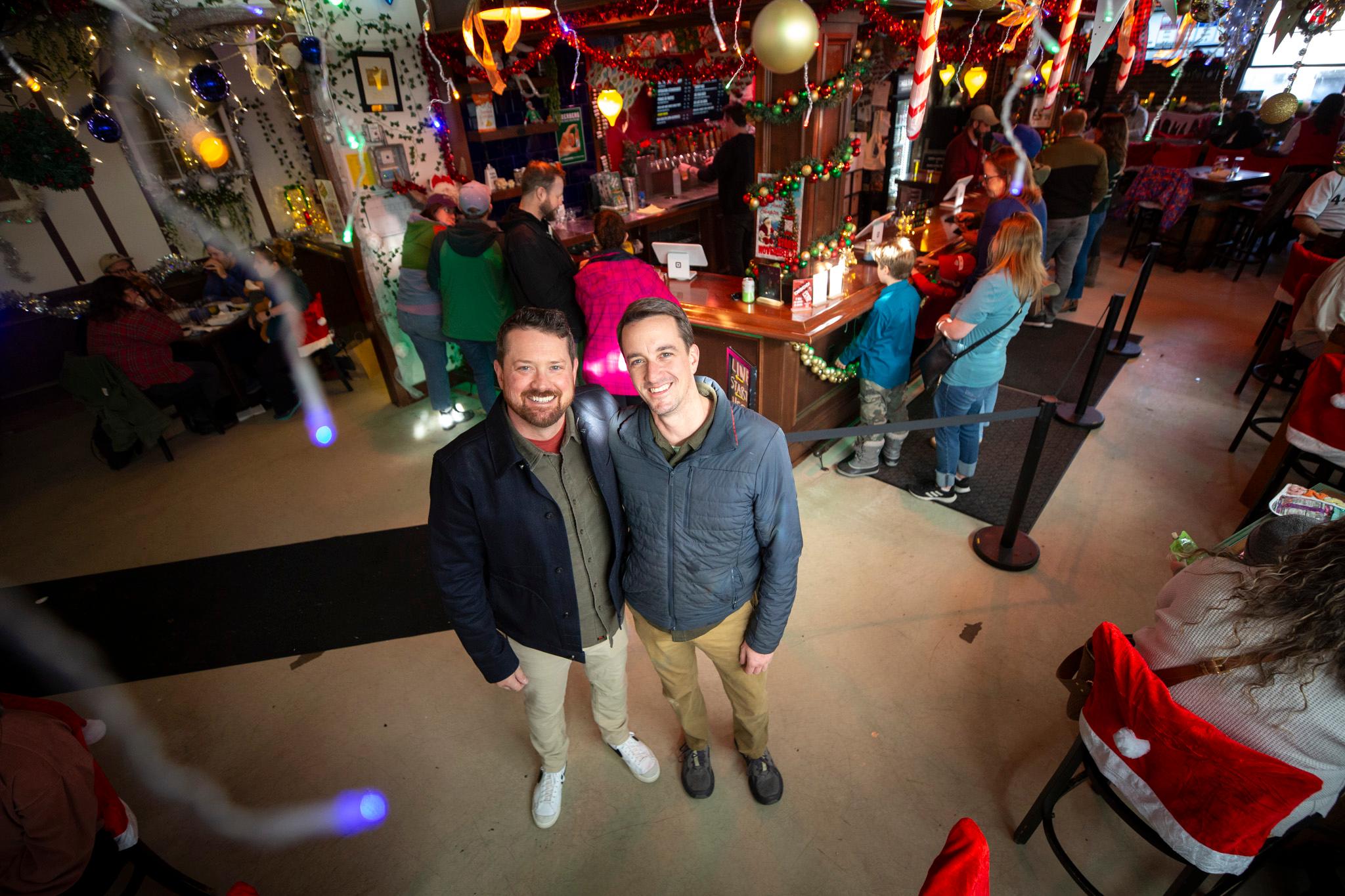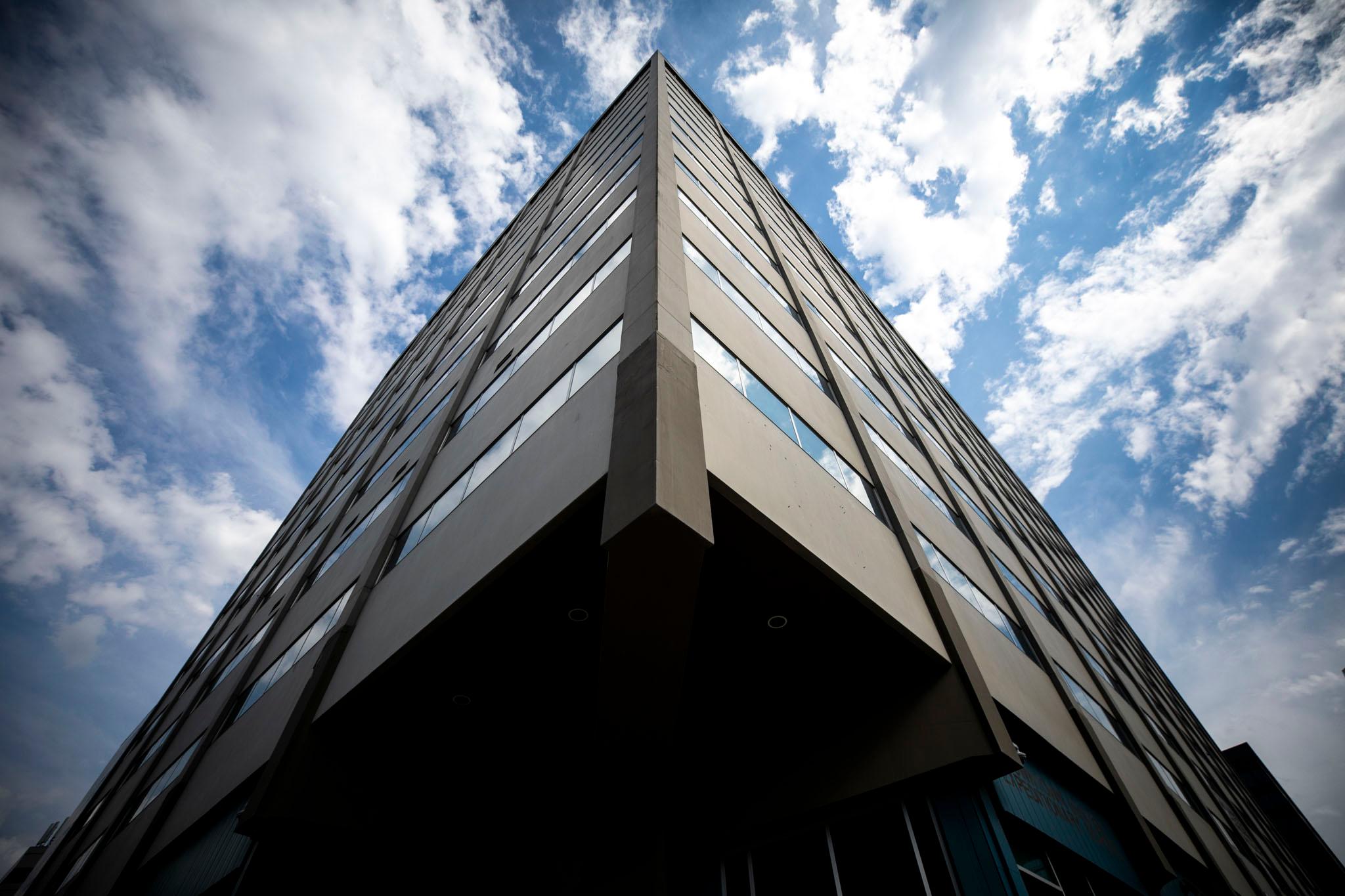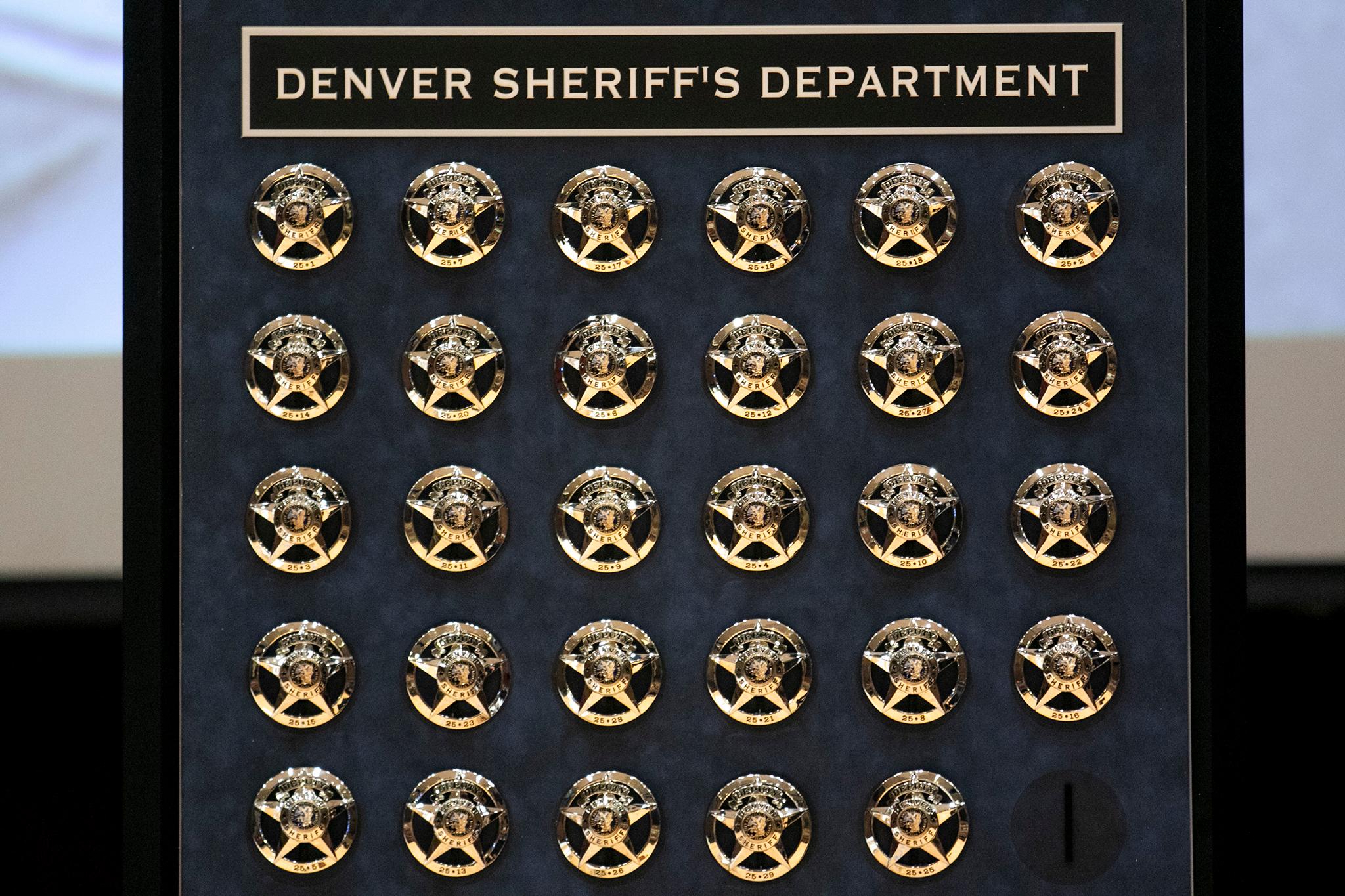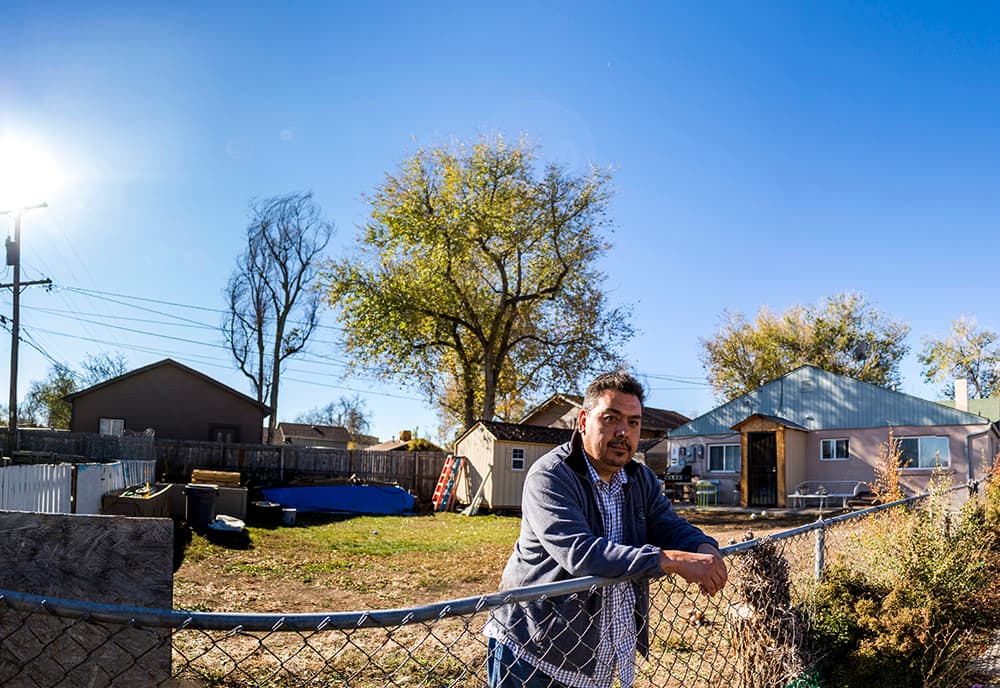
Miguel Ramirez has no problem paying the mortgage on his Westwood home right now, but he's facing a major property tax increase next year -- and it probably won't be the last one.
At 49, he's not getting any younger, and he knows that life -- and income -- can be unpredictable.
"This house is like my board, and I'm floating in the ocean," Ramirez said. "If I lose this, I go back to renting and who knows where and who knows how long?"
West Denver Renaissance Collaborative plans to launch a major housing initiative early next year to help West Side homeowners like Ramirez gain more stability by building accessory dwelling units -- carriage houses, casitas, granny flats, in-law apartments, call them what you like -- on their property.
In 2010, a zoning change allowed ADUs in some Denver neighborhoods based on a number of factors, including community desires. The idea of squeezing low-rise, small-scale affordable housing into existing single-family neighborhoods is very popular in the world of affordable housing theorists, and what's not to love? Homeowners get an additional source of income, renters get more options and neighborhood character doesn't change as dramatically as when single-family houses are scraped for mid-rise apartments.
But since 2010, just 139 ADUs have been built in Denver. There are a variety of reasons for this, but one of them is that it's really expensive and nearly impossible to get financing. By the time you account for hiring an architect and waiting months for permits, it can cost around $250,000 to build a 600 square foot unit, and banks generally won't issue loans for them because they can't repossess a granny flat if you default.
"That's not acceptable," said Renee Martinez-Stone, director of the West Denver Renaissance Collaborative. ADUs have ended up being a "tool of privilege," she said, but it doesn't have to be that way. "This is a tool that could keep people in place. It shouldn't just be for people who are capitalized and connected to contractors."
The WDRC coordinates public and private investment in the west Denver neighborhoods of Westwood, La Alma/Lincoln Park, West Colfax, Athmar Park, Barnum, Barnum West, Valverde, Villa Park and Sun Valley. It's housed within but is distinct from the Denver Housing Authority, and by operating as a district, it can attract money from foundations and impact investors who wouldn't necessarily invest in projects at the neighborhood level.
These west Denver neighborhoods have seen rapid increases in property values: an average increase in home values of 52 percent between 2015 and 2017 and an average increase in sales values of 88 percent. Valverde saw the second highest increase in assessed value in the city, at 60 percent. In west Denver, 57 percent of homeowners earn 80 percent or less of area median income, compared to 30 percent for the metro area as a whole, meaning it will be harder for them to absorb the looming property tax increases. Denver's Office of Economic Development has flagged many of these neighborhoods as susceptible to gentrification and the displacement that comes with it.
"Single Family Plus," the Renaissance Collaborative's housing initiative, hopes to build some 250 accessory dwelling units over the next five years in eligible neighborhoods on the West Side. (Athmar Park doesn't have the appropriate zoning for ADUs.) If the program is successful, it could be expanded to other parts of Denver.
How would this work?
The initiative would make a range of low-cost financing options available to interested homeowners and offer a set of six "off-the-shelf" designs from which people can choose without hiring an architect. Martinez-Stone said she believes the collaborative can cut the cost of building ADUs in half, and after refinancing their primary mortgage, many homeowners will see their costs stay the same or go down while adding a new source of income.
"Single Family Plus" isn't just about ADUs. The program will also help homeowners in west Denver, many of whom have older mortgages at higher interest rates, refinance even if they don't have room for an extra little house or aren't interested in becoming landlords. That alone can help longtime community members stay in place even as home values rise and the neighborhood changes, Martinez-Stone said.
However, Martinez-Stone sees ADUs as having potential to stop displacement in these heavily Latino, traditionally working class neighborhoods, both by giving homeowners a way to bring in more income and by creating more affordable housing that blends into the neighborhood. Nearly 6,000 parcels in west Denver are zoned for ADUs, and another 3,300 could have an ADU, tandem house or duplex.
There are a few different paths that homeowners could take, Martinez-Stone said, though some of the details are still being finalized. Families earning 80 percent of less of AMI -- $47,040 for an individual or $60,480 for a family of three -- could get help to refinance their mortgage with the costs of construction rolled into the new payment, and they'd be eligible for a $25,000 loan that would be payable only upon sale of the property. That type of loan is already available to developers of affordable apartment complexes, Martinez-Stone said.
Families earning 60 percent or less may also be eligible to have many of the development costs waived. Families earning more money could still get access to the $25,000 loan and help with financing. There will be an option to include payments on the ADU construction in a refinanced mortgage and also an option to pay off a separate loan more quickly. The collaborative will use Fannie Mae HomeStyle loans, a home renovation loan, and Martinez-Stone also hopes to draw in market-rate lenders or impact investors by serving as a guarantor on home equity construction loans for ADUs, a product that doesn't really exist yet.
Homeowners who take advantage of public funds to build their carriage houses and casitas would have to agree to rent to people making no more than 80 percent of area median income. Roughly 78 percent of renters in west Denver fall into that income range.
"We had to ask ourselves: Is this only to stabilize the homeowner?" Martinez-Stone said. "That's a worthy investment, but that just pushes off gentrification. This is not just an investment in a person. We're putting this unit in the neighborhood so that a lower-income person can afford to live there."
The funding for this program would come from the city's affordable housing funds, from nonprofits and foundations, from private lenders willing to take a risk and from "impact investors."
The Denver Foundation, Enterprise Community Partners, the city and county of Denver and Denver Housing Authority are all involved. Facilitating ADU construction is a strategy in Denver's comprehensive housing plan, and Single Family Plus will be part of the city's action plan for 2018. The Colorado Housing and Finance Authority plans to start purchasing Fannie Mae HomeStyle Loans. CHFA doesn't issue loans directly, but as a purchaser of various types of home loans, it helps shape the private market. Habitat for Humanity Colorado plans to offer the services of its paid employees to help build the ADUs. This is a new venture for Habitat for Humanity, but one that administrators there see as within their mission.
"We see so many working class families who have achieved the dream of homeownership who want to stay in their neighborhoods but their wages have just not kept pace with housing costs," said Katie McKenna, director of community development. "That is at the heart of Habitat's mission."
People who work with West Side homeowners see a lot of potential.
Lance Guanella, deputy director of the Southwest Improvement Council and a HUD-approved housing counselor, said ADUs would help many of the homeowners who come to him in distress avoid those situations.
"The majority of people coming to me with hardships, they've had a medical problem, or they've had a reduction of income," said Guanella, who has been part of the discussions around setting up the program. "When they qualified for the mortgage, they could handle the payments, but they lose their job, and maybe they get another job, but it's not nearly the same amount of income."
Looming property tax increases mean even more people will be in this situation.
"If the current owner is going to be struggling with property taxes, this gives them an opportunity to bring in some additional income, or they could build it for an older child who hasn't been able to find housing and have that child pay as much as they can toward the mortgage," he said.
But the flip side of rising property values is that many homeowners now have significant equity in their homes, in contrast to 2009 and 2010, when more homeowners had lost value. Guanella said the program needs to have a significant education and counseling component to make sure people understand the risks they're taking on and don't use up all their equity, but many homeowners are in a good position to refinance and invest in their properties in ways that will serve them in the future.
"I think it's a very innovative idea that would allow somebody who is facing the gentrification issues, where they just can't stay here anymore because they can't afford it anymore, maybe they can look at getting some extra income," he said. "It's certainly not an idea that will completely solve the affordable housing crisis in Denver, but if it means at least one or two people find housing because of it, it's a step in the right direction."
Jose Esparza, executive director of BuCu West (that's Business and Culture West Denver, a community development organization founded in 1986), said the initiative is especially important after the passage of the Our Denver bonds, which Esparza calls a "double-edged sword."
"We have additional money coming to Morrison Road, and we have a rec center coming to southwest Denver," he said. "Those are great resources coming to this community and making it better for our youth, but the same effect could go against us, and we could push out the people we're trying to serve."
He sees the ADU initiative as stabilizing homeowners and building wealth, an important complement to other work being done on the economic development front to support small businesses and provide job training.
Martinez-Stone said the entire city should care about the West Side's low-income homeowners maintaining their foothold in Denver. These are families with deep community ties who want to stay in their community, and they shouldn't be forced to sell because they can't keep up with taxes, she said. But they're also an important part of the city's workforce.
"Our economy cannot afford for these families to sell their homes by the thousands and move far away," she said.
In contrast to other parts of Denver, the city and community leaders have had more time to see gentrification coming and more time to prepare strategies.
"This could be a whole different chapter of revitalization that doesn't lead to displacement," Martinez-Stone said.
For his part, Ramirez, an equipment operator for Denver Public Works who sweeps streets in the summer and plows snow in the winter, he likes a lot of the changes that have come to Westwood. He's owned his home for just six years, but he's lived in this neighborhood for nearly 20 years and raised his children here.
"It was not so pretty then," he said, recalling a Morrison Road corridor rife with drug-dealing, prostitution and chop shops. "I don't have anything against gentrification. It comes in waves and happens everywhere. But it's a sad situation when you have to give up and get out of there."
His 22-year-old son, Manuel, recently moved back home ("the millennial story, he's not the only one") after his roommates lost their jobs, and between the three of them, they couldn't afford $1,500 a month on a two-bedroom apartment.
Ramirez said at first he was surprised by how much the young men were paying, but then he realized that's just what Denver costs these days.
If he's able to build an ADU on his property, he might rent it out for income or offer it to one of his children. There are a lot of details he still has to work out, from the financing to the zoning to making sure there's room after the utility easements and setbacks are accounted for. But he's excited by the potential.
"This is the greatest idea I have heard and an excellent program," he said. "I like to close my eyes and envision that it helps a lot of families the way it will help me, God willing."
Correction: This story has been changed to reflect the correct number of ADUs built since 2010 and to more accurately characterize why some neighborhoods allow ADUs and some don't. The original number was based on outdated information.
